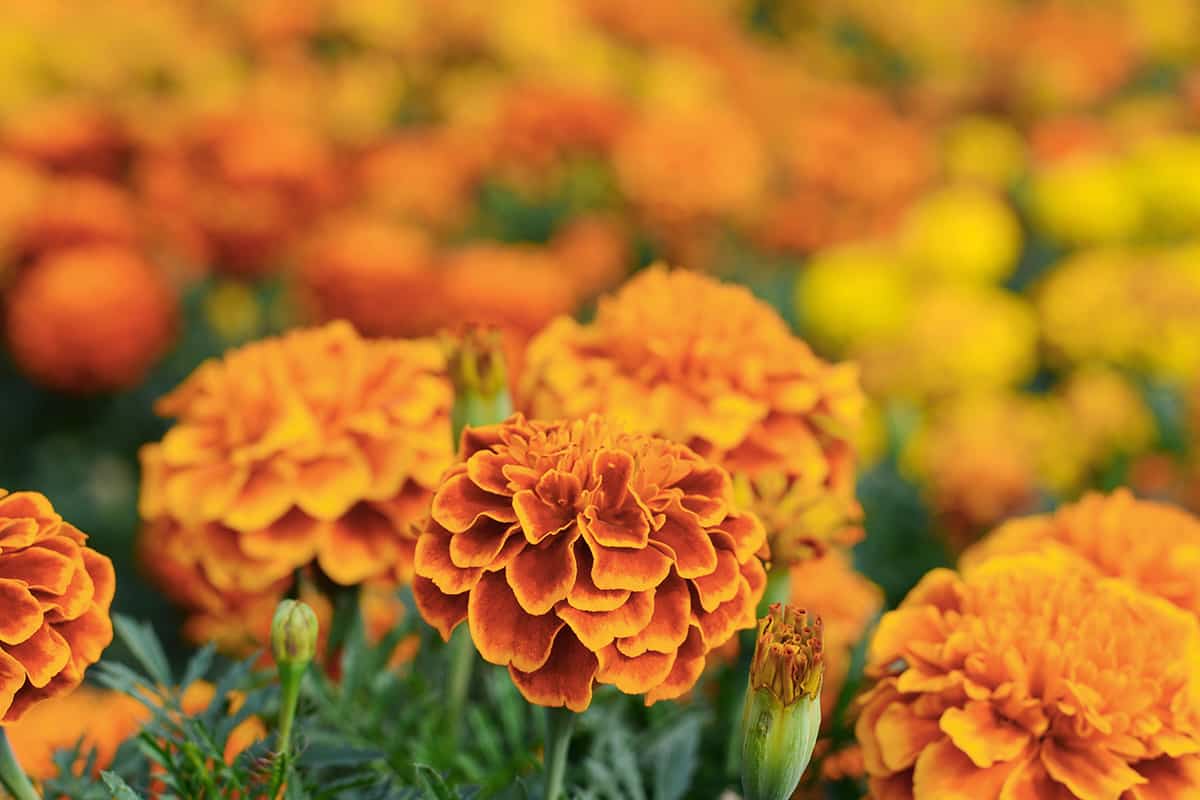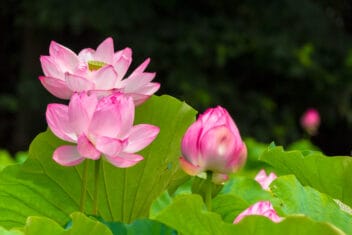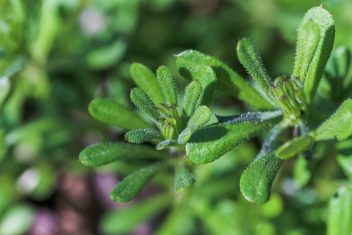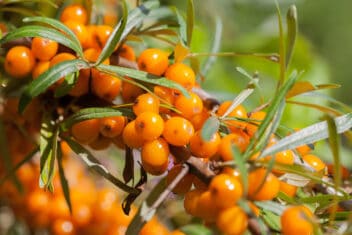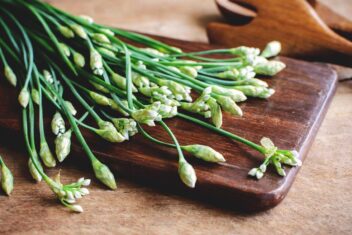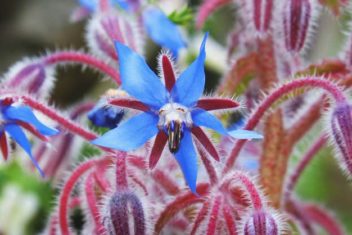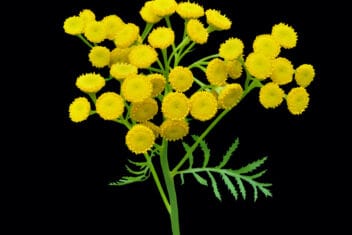Marigolds are not only pretty flowers but did you know that they’re a natural form of pest control? Yep! Growing marigolds helps to protect your garden from a variety of bugs.
Marigolds are a hardy, summer-loving annual that starts readily from seeds. They come in a variety of colors including yellow, orange, and rust.
Out of the garden, they look wonderful as cut flowers both fresh and dry. You can also use them as a dye or a snack!
This article will walk you through how to grow marigolds, how to choose the best varieties to repel pests, and what vegetables to plants them with.
How do Marigolds Benefit the Garden?
When planted in groupings, marigolds put off a strong scent that masks the smell of the vegetables so that bad bugs can’t seek them out. That smell also repels many flying insects.
Cabbage moths, whiteflies, and mosquitos are all driven away by the smell.
Marigolds also contain thiophene, which kills some insects. Studies have shown that this chemical destroys mosquito larvae in the lab.
Not all bugs hate marigolds, though. Bees love them and, unfortunately, so do Japanese beetles.
Use Them as a Cover Crop for Nematodes
Marigolds repel several vegetable gardener’s enemies, but they’re perhaps best known for repelling root-knot nematodes.
There are many types of nematodes. The ones that concern us are those that feed on the roots of plants.
Nematodes are microscopic roundworms that live in the soil. They destroy the roots of many vegetables. According to the American Plant Society, nematodes cause reduced yields to many commercial vegetable crops, including tomatoes, carrots, and peanuts.
When the nematodes feed on your plant roots, it causes swelling, which is referred to as a gall. These galls block the transport of water and nutrients to the plant, causing it to become weak and possibly die.
You can tell you have root galls by examining the roots for swelling. They may turn yellow and look wilted. Young plants may become stunted.
Nematodes are hard to control because there only are few treatment options available. Monterey has an organic product that is fairly pricey and involves irrigating the area.
As a result, some commercial growers in areas with a high number of nematodes have started growing marigolds as a cover crop to naturally reduce nematode populations.
Attract Beneficial Insects
Marigolds attract many beneficial bugs such as lacewings, hoverflies, lady beetles, and parasitic wasps. Plant marigolds around the garden edges or on the outside edges of raised beds to draw good bugs in.
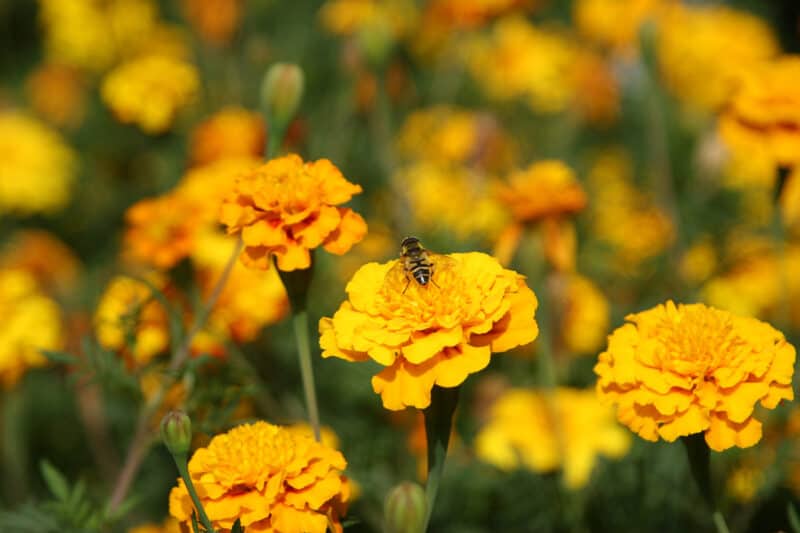
Honey bees also love marigolds and they’re a good source of nectar and pollen.
Fall Pest Control
Another way to keep being blessed with the benefits of marigolds is to plow them under in the late summer. The marigolds will decompose in your soil and release thiophene.
Marigolds begin to produce this chemical after they have been in the ground for several months. They will continue to produce thiophene until they’re killed by frost.
When you dig them into your ground at the end of the year, they release the stored thiophene into the soil, which protects plants the following season. Plant marigolds in different garden locations each year to control your root nematode population.
Best Marigold Varieties
The variety of marigold you plant is essential if you’re planting for pest control. Marigolds with a strong scent have proven to be better at pest control.
There are three main types of marigolds. French (Tagetes patula), Gem or Signet (T. tenuifolia), and African (T. erecta). The French marigolds are reputed to produce more thiophene although Signet and African marigolds produce measurable amounts as well.
Brocade Mix
If you are looking for a jazzy bedding plant to perk up a garden area while providing protection, choose ‘Brocade.’ The doubled flowers are ruffled and bloom in various colors.
This French variety only gets ten inches tall and is great for borders.
Court Jester
‘Court Jester’ is a French marigold. It’s my favorite because I love the yellow and maroon stripes. They take longer to flower at 100 days, but it’s worth the wait.
Starting inside will give you a jump on the season. Tall plants, they grow to 20 inches, which makes them ideal for bouquets.
This variety has shown to repel the Southern root knot nematode well in tests.
Tangerine Gem
A gem/signet marigold, the long blooming flowers appear on low mounds with dark green lacy foliage. The flowers are edible and have a citrusy scent.
The plant grows 12 inches tall with many branching stems. Takes 60 days to flower.
Vanilla
An African variety, it doesn’t produce as much thiophene as some others. However, the African varieties are tall (18 inches) and make nice cut flowers.
Vanilla produces ruffled double blooms in a deep cream color.
Planting Marigolds
Marigolds are easy to start from seed or you can purchase them at any local nursery or big box store. They grow best in full sun and well-draining soil. They’re adaptable to a range of soils and are quite hardy.
Start seeds indoors about four weeks before your last frost date. Place seeds in a moist light soil starting mix about 1/8 inch deep. Lightly cover them with soil.
They germinate best in a warm grow room at about 75-80°F (24-27°C) and take about 7-10 days.
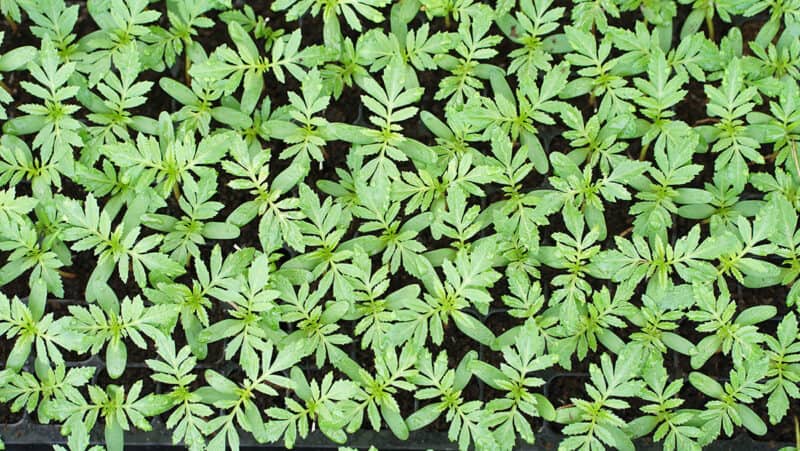
If you have a crowded grow room, they’re quite easy to direct seed in the garden. After your last frost, sow in prepared ground about 1 1/4 inches deep.
Place seeds 4 inches apart and thin when true leaves appear. Thin according to the type of marigold. French marigolds should be eight inches apart, gems 12 inches apart, and Africans 18 inches.
Caring for Marigolds
Most people like growing marigolds as annual to add color to their garden, so you don’t have to worry about year-to-year maintenance.
But if you want to not only add decorative interest but to protect your garden and provide a tasty addition to your salad, here’s how to care for your plants.
Water
Marigolds are tolerant of drought; however, the blooms suffer in dry summer weather. Water one inch weekly to keep plant producing blooms.
Fertilizer
Marigolds aren’t heavy feeders, so they don’t need too much – or any – fertilizer while they’re growing. Too much fertilizer will result in lots of leaves and few flowers. If you have good compost-rich soil, don’t fertilize your plants.
If the leaves yellow or the plant looks droopy, fertilize with a good organic fertilizer such as fish emulsion.
Mulch
Marigolds benefit from a layer of organic mulch, such as straw or wood chips. The mulch will help deter weeds and conserve water.
Deadheading will increase blossoms, and you can pinch the plant back to make it bushier.
Problems and Solutions to Growing Marigolds
Marigolds have few problems because, as we have talked about, they’re good at repelling pests. However, sometimes slugs can be a problem.
Monitor your garden for slugs, and if you see them use an organic slug control method. Putting stale beer in a shallow lid and setting it in the soil at ground level is a classic strategy. The slugs drink the beer and drown.
Japanese beetles love to chomp on marigolds, as well.
They can also be attacked by Alternaria leaf spot, bacterial leaf spot, fusarium wilt, and septoria leaf spot.
Companion Planting with Marigolds
Marigolds are the ultimate companion plant. They do well with and enhance the growth of tomatoes, potatoes, eggplant, broccoli, cabbage, and kale. Marigolds are also a fabulous companion plant for the melon family because they deter beetles.
Beans are one of the few plants that don’t do well next to marigolds.
Harvesting and Using Marigolds
You can harvest marigolds as a cut flower. I think they make a pretty table centerpiece on the kitchen table or for an outdoor party.
Marigolds readily reseed, so once you get them established in your garden, allow several plants to go to seed. You can allow them to scatter on their own, or you can give them an assist.
If you like to have better management or want to plant them in a new area, it’s easy to gather seeds. Pick the seed heads off the plant and put them single layer on a screen to dry. Place the screen in a cool shady location with good air circulation.
The seed heads will dry in about two weeks and can be stored in a glass jar with a lid until the next growing season. Make sure to label the seeds so you remember which variety they are.
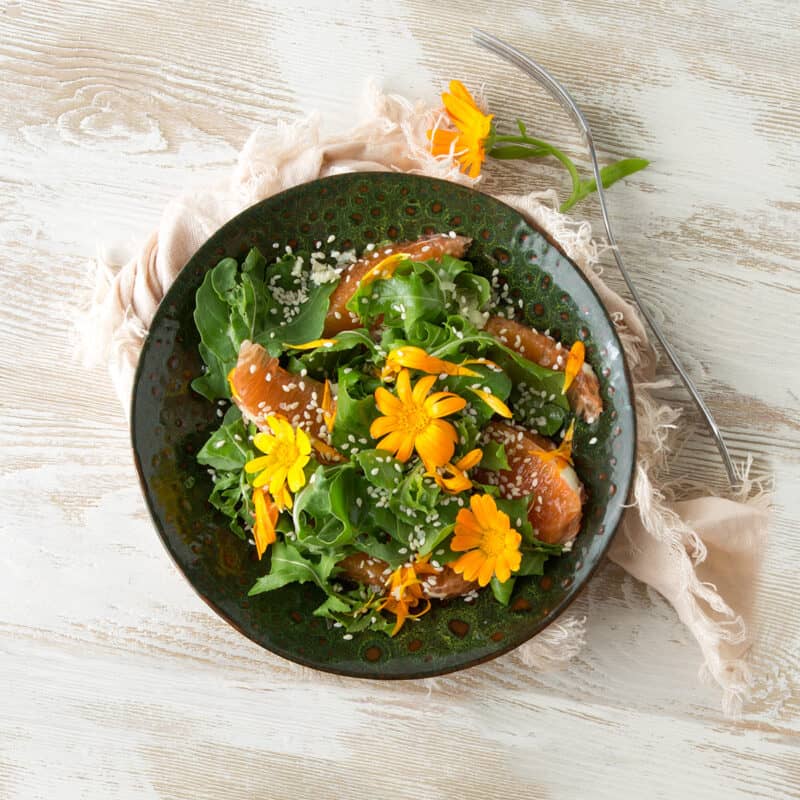
Many people don’t realize that marigolds are an edible flower. The petals can be used as a beautiful garnish for salads, on cupcakes, and in egg dishes.
Here is a fun and simple recipe from Lavender and Lovage: Egg And Tomato Salad With Marigold & Chive Flowers
In Eastern Europe, especially Georgia, it is popular to grind up the flower petals to make the spice Imeretian Saffron.
The flower petals can also be used to make a yellow dye for textiles.
Feed marigold flowers to your chickens to make the yolks more orange.
Use it as an essential oil blended with sandalwood oil to make a perfume called ‘attar genda.’
